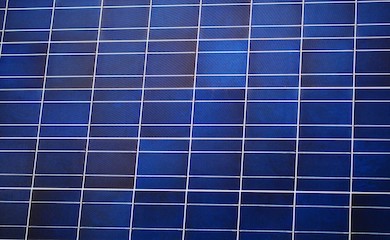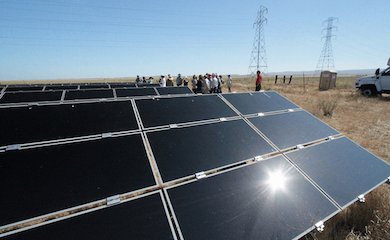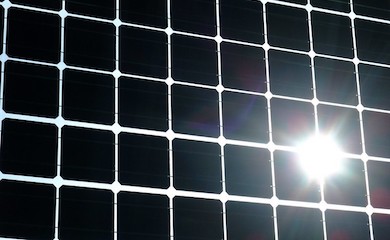Overview
Bi-facial solar photovoltaic (PV) panels have been around for many years however they are only now beginning to enter the mainstream market as a commercially viable alternative to the more common monofacial solar panels. We therefore thought it would be a good idea to explore the technology further and provide initial technical planning guidance.
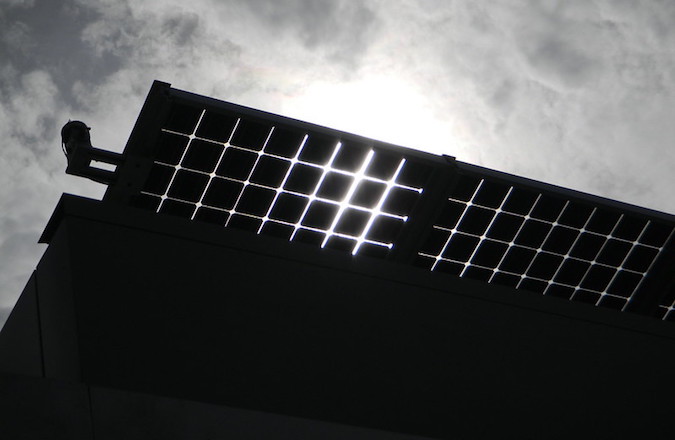
Figure 1: Bi-facial solar panels.
What is the benefit of bifacial solar panels?
Unlike monofacial solar panels where the module is backed by an opaque sheet, bi-facial solar panels can absorb light from both faces of the panel thus having generative capacity on either face and increasing their capacity[1].
The panels can be finished on each side with a glass surface or use clear back sheets. Some can be monocrystalline, and others can be polycrystalline. In all cases, the defining factor of a bi-facial solar panel is that both faces of the panel can absorb light and generate electricity.
Of course it is not possible to have both sides of the panels optimised for maximum capacity because only one side of the panel can ever face the Sun directly. However, by utilising reflective materials on surfaces orientated towards the rear face of the panel (the face of the panel not facing the Sun) the ‘shaded’ face can be subjected to greater light levels due to the albedo effect. This maximises generative capacity. An example of this may be painting the roof on which the solar panels are mounted white. The benefit of a bi-facial solar panel means efficiency has been claimed to increase by as much as 30%[2].
Bifacial solar panels are often frameless however they are often thicker to ensure structural integrity. They are considered to be more durable as both sides of the panels are UV resistant and there is a reduction of Potential Induced Degradation (PID). PID is caused by voltage, heat and humidity which most solar modules are exposed to. It can occur when the module’s voltage potential and leakage current drive ion mobility within the module between the semiconductor material and other elements of the module (e.g. glass, mount and frame), thus causing the module’s power output capacity to degrade, in some cases significantly[3].
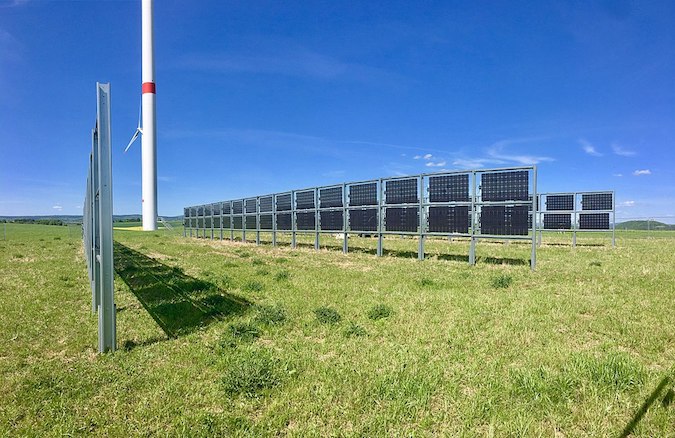
Figure 2: Bi-facial solar panels.
Bifacial panels and glint and glare
We are often asked whether glint and glare effects from bi-facial panels are a possibility and whether the risks are significant. Whilst the potential for effects remains the same due to both faces consisting of a reflective surface, it is deemed very unlikely that significant glare effects from the underside are possible for static, single and dual axis trackers. This is because this face will almost always be facing away from the Sun. On static systems (south facing with a 20-degree elevation angle, for example), the underside of the panel will be angled downward towards the ground. Considering the path of the Sun throughout a typical day in the UK (as an example), any reflections will only ever go towards the floor. The possibility of glare effects for the optimised face (the face orientated towards the Sun) remains the same.
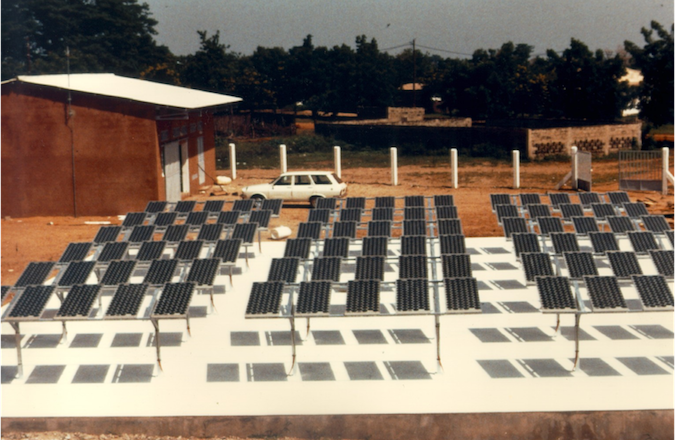
Figure 3: Bi-facial solar panels on white reflective surface.
Conclusions
Bi-facial solar panels represent a great leap in solar panel technology by increasing efficiency within the same footprint as single faced panels. It is expected that these panels will become more common as the technology becomes cheaper and sites get bigger and this is currently being seen through the progression of subsidy free sites. The effects of glint and glare from the underside are likely to be insignificant for typically mounted systems where the rear side of the panel is not optimised to face the Sun directly. Whilst solar panels do not need direct sunlight to generate electricity, glint and glare effects can only be significant when direct sunlight illuminates the face of a solar panel. Therefore glint and glare effects are not expected to increase where bi-facial solar panel technology is utilised.
Pager Power
A common requirement for developers is to ensure that Solar PV developments will not cause unacceptable impacts associated with reflected sunlight by the panels. Pager Power’s glint and glare assessments are comprehensive, covering all technical aspects that are regularly required. If you wish to discuss any of your existing or upcoming projects, please do not hesitate to contact the team.
References
[1] What are Bifacial Solar Panels? Solar Guide. Last Accessed 06/05/2020.
[2] What are bifacial solar modules? Kelly Pickerel, Solar Power World. Last Accessed 06/05/2020.
[3] What is PID (Potential Induced Degradation)? LG Solar FAQS. Last accessed 06/05/2020.
Image accreditation:
https://www.flickr.com/photos/curiouslee/3954036785
https://commons.wikimedia.org/wiki/File:Next2Sun_Anlagenkonzept.jpg
https://commons.wikimedia.org/wiki/File:Noto_Bifacial_Plant.png

